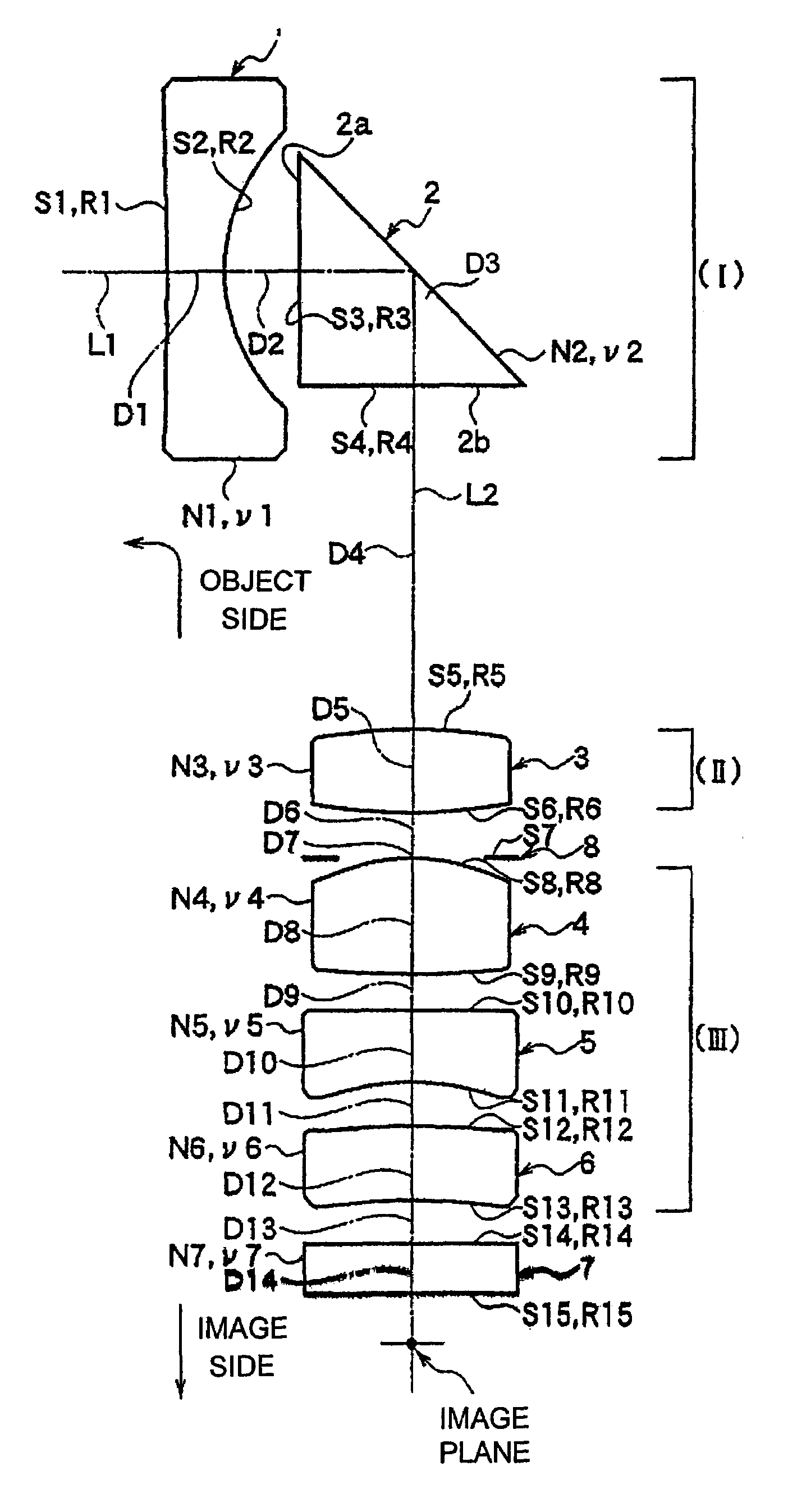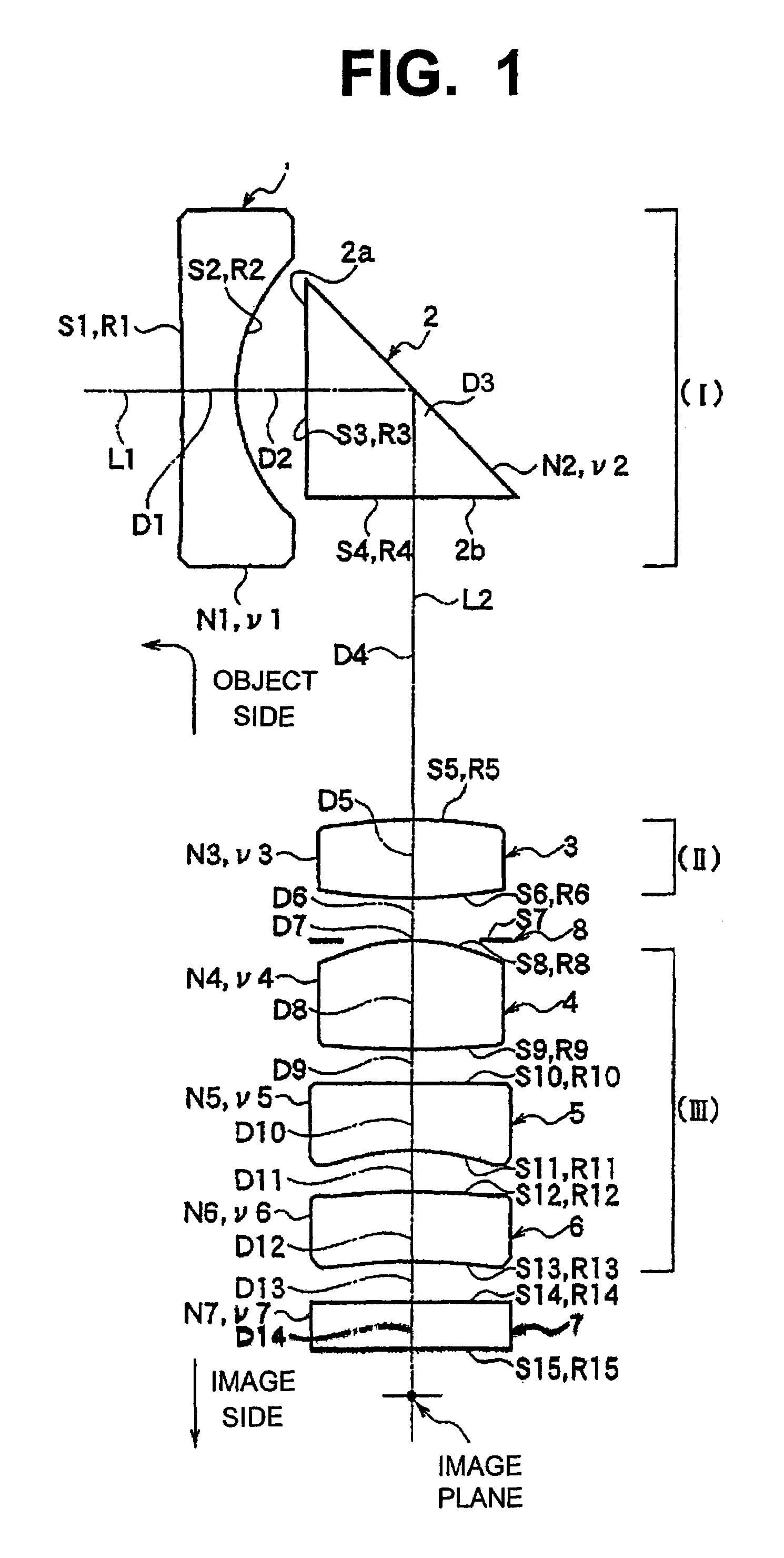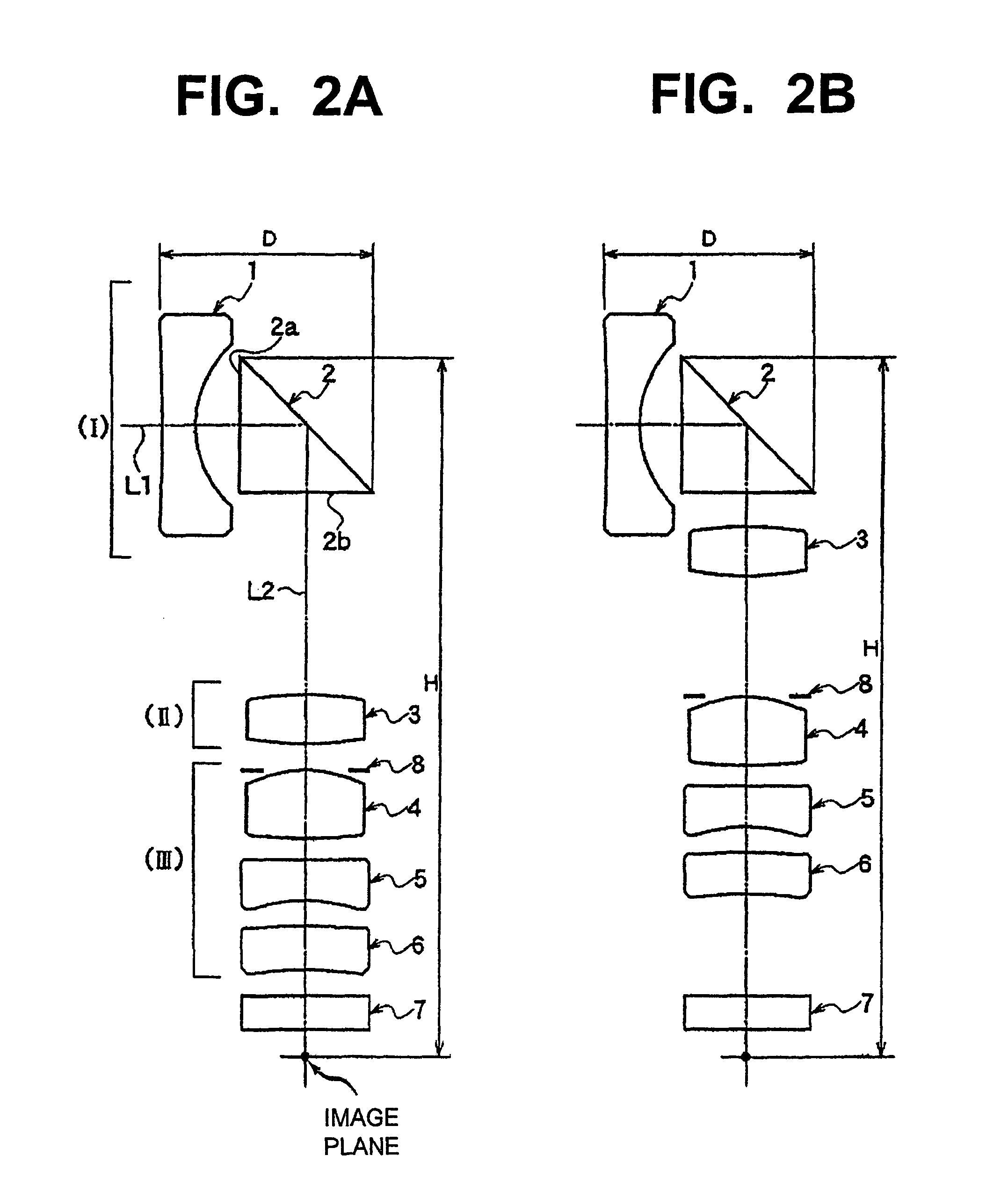Zoom lens
a zoom lens and lens barrel technology, applied in the field of zoom lenses, can solve the problems of increasing the number of components, complex configuration of the lens barrel, and the collapsible mount mechanism, so as to reduce the weight, reduce the manufacturing cost, and manufacture easily
- Summary
- Abstract
- Description
- Claims
- Application Information
AI Technical Summary
Benefits of technology
Problems solved by technology
Method used
Image
Examples
embodiment 1
[0072]In the above embodiment 1, lens depth D (lens 1 to prism 2) is 7.75 mm, total lens length (prism to image surface) H is 25.28 mm, total lens length (front S1 of lens 1 to image surface) is 28.23 mm, back focus (air conversion) is 2.68 mm–3.99 mm–5.36 mm, F number is 2.89–3.41–3.94, and angle of view (2ω) is 61.3°–40.0°–31.1°, thus providing a compact, thin, and a high optical capability lens with all aberrations suitably corrected.
[0073]FIG. 7 and FIG. 8 show the basic constitution of a zoom lens of another embodiment according to this invention. All components of this zoom lens are made of plastics (resins) and the zoom lens is constituted similarly to the above mentioned embodiment except the changes made in the specifications of lens 4′, lens 5′ and lens 6′ of the third lens group (III).
[0074]As an example using specific numerical values of the above embodiment, an embodiment 2 will be shown below. Table 5 shows the major dimensions of embodiment 2, Table 6 shows various nu...
embodiment 2
[0080]In the above embodiment 2, lens depth D (lens 1 to prism 2) is 7.75 mm, total lens length (prism to image surface) H is 25.39 mm, total lens length (front S1 of lens 1 to image surface) is 28.34 mm, back focus (air conversion) is 2.79 mm–4.08 mm–5.42 mm, F number is 2.89–3.43–3.98, and angle of view (2ω) is 61.2°–39.9°–31.0°, thus providing a compact, thin, and a high optical capability lens with all aberrations suitably corrected.
[0081]FIG. 12 and FIG. 13 show basic constitutions of zoom lens of other embodiments according to this invention. All components of this zoom lens are made of plastics (resins) and the zoom lens is constituted similarly to the above mentioned embodiment except the changes made in the specifications of lens 4″, lens 5″ and lens 6″ of the third lens group (III).
[0082]As an example using specific numerical values of the above embodiment, an embodiment 3 will be shown below. Table 9 shows the major dimensions of embodiment 3, Table 10 shows various numer...
embodiment 3
[0088]In the above embodiment 3, lens depth D (lens 1 to prism 2) is 7.75 mm, total lens length (prism to image surface) H is 25.35 mm, total lens length (front S1 of lens 1 to image surface) is 28.30 mm, back focus (air conversion) is 2.75 mm–4.04 mm–5.37 mm, F number is 2.89–3.43–3.97, and angle of view (2ω) is 61.1°–39.9°–3 1.0°, thus providing a compact, thin, and a high optical capability lens with all aberrations suitably corrected.
PUM
 Login to View More
Login to View More Abstract
Description
Claims
Application Information
 Login to View More
Login to View More - R&D
- Intellectual Property
- Life Sciences
- Materials
- Tech Scout
- Unparalleled Data Quality
- Higher Quality Content
- 60% Fewer Hallucinations
Browse by: Latest US Patents, China's latest patents, Technical Efficacy Thesaurus, Application Domain, Technology Topic, Popular Technical Reports.
© 2025 PatSnap. All rights reserved.Legal|Privacy policy|Modern Slavery Act Transparency Statement|Sitemap|About US| Contact US: help@patsnap.com



